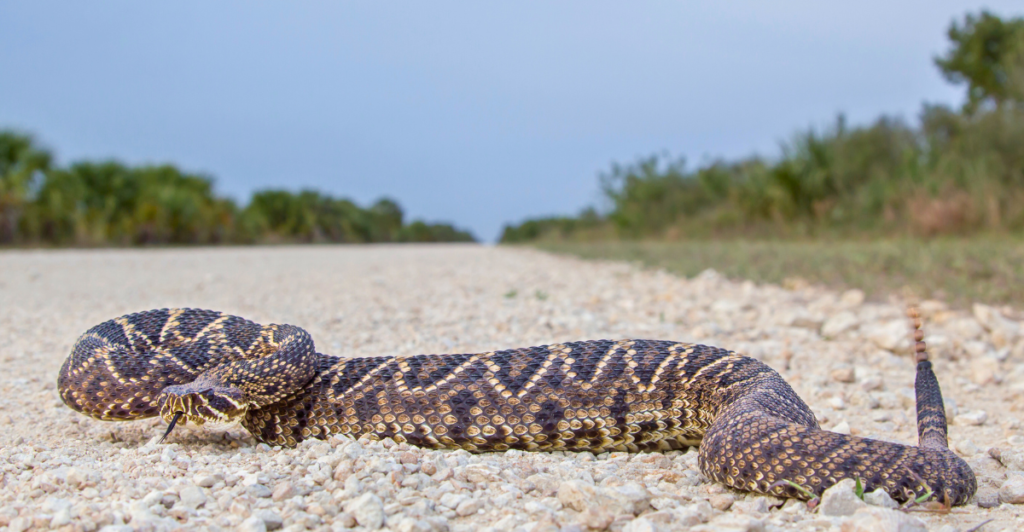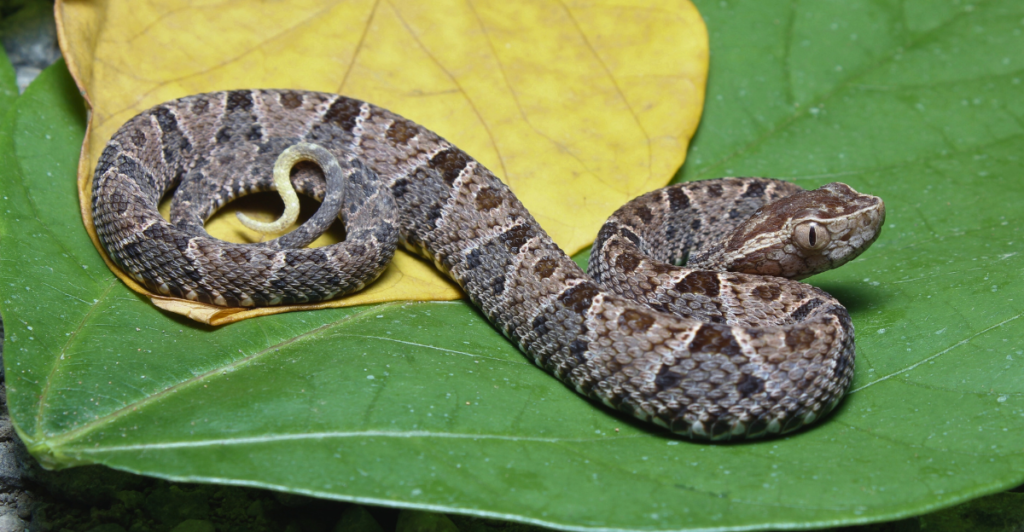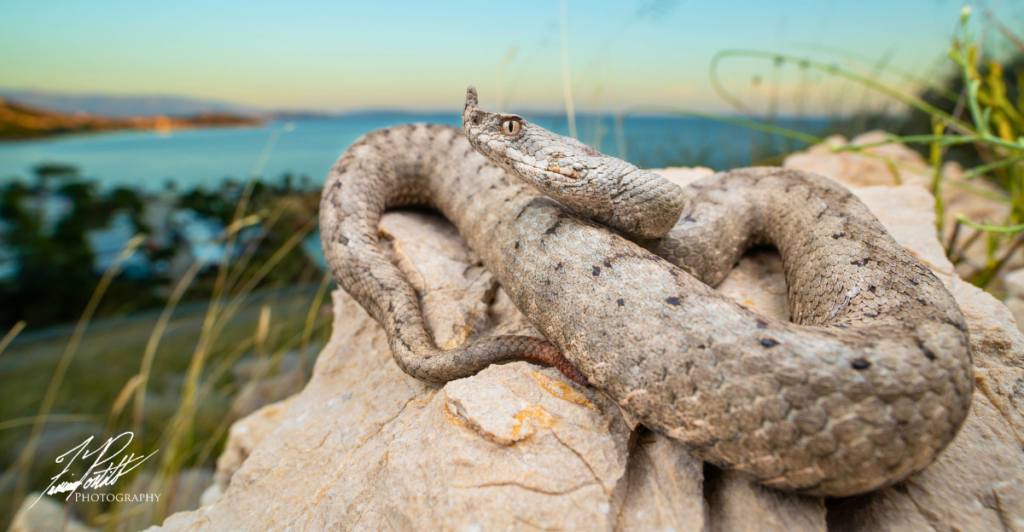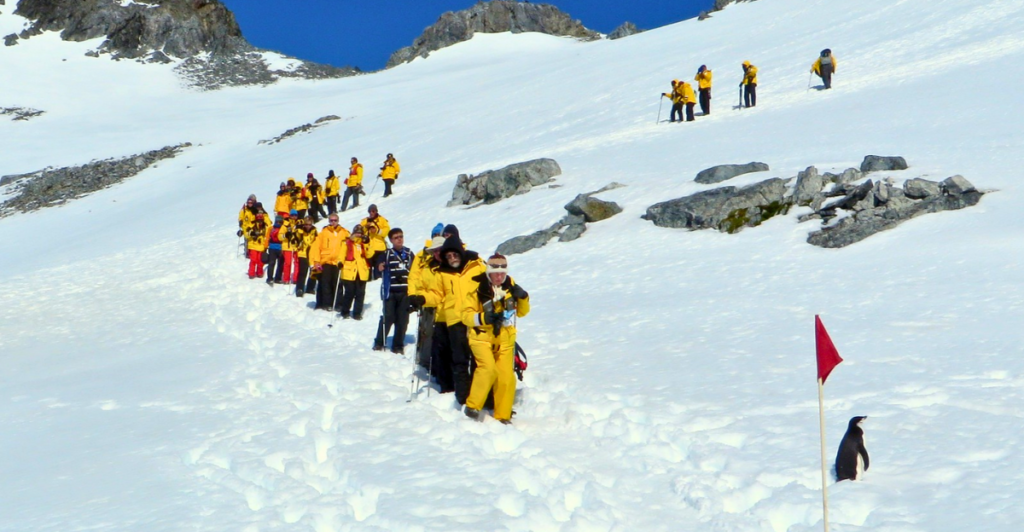
Snakes are some of the most feared and fascinating creatures in the world, and their venom can be deadly. Across continents, certain snakes stand out as particularly dangerous, causing more fatalities and severe injuries than others. This article explores the deadliest snake on every continent, highlighting their habitats, venom potency, and the importance of seeking immediate treatment after a bite.
North America: Eastern Diamondback Rattlesnake

The Eastern Diamondback Rattlesnake is the deadliest snake in North America. It causes more deaths than any other species, despite the Mojave rattlesnake and coral snakes having more toxic venom. Delivering up to 300mg of venom per bite, the Eastern Diamondback has a mortality rate of 10% to 30% if left untreated. Found in the southeastern U.S., this snake inhabits pine forests, marshes, and burrows.
South America: Fer-De-Lance

The Fer-De-Lance is the most dangerous snake in South America, injecting enough hemotoxic venom to kill over 30 people in a single bite. Symptoms such as severe pain, swelling, and necrosis develop within 15 minutes. Without anti-venom, mortality rates can reach 9%, with many victims suffering amputations. This species thrives in tropical rainforests and wet, deciduous forests.
Europe: Nose-Horned Viper

The nose-horned viper, with its powerful venom and large fangs, is Europe’s deadliest snake. Its venom combines proteolytic, neurotoxic, and hemotoxic properties, causing symptoms like pain, swelling, and dizziness. While fatalities are rare with proper medical care, the viper remains a significant risk in southern Europe, particularly in rocky, dry habitats across the Balkans and northern Italy.
Africa: Puff Adder

The puff adder is responsible for the most snakebite fatalities in Africa. Its venom is potent enough to kill four or five adults, with a mortality rate of 52% if untreated. Its long fangs penetrate deeply, leading to severe pain, swelling, and tissue damage. Widely distributed across Sub-Saharan Africa, this snake can be found in grasslands and rocky areas but avoids deserts and rainforests.
Asia: Saw-Scaled Viper

The saw-scaled viper is the deadliest snake in Asia, causing more fatalities than any other snake globally. Known for its defensive nature, this snake bites quickly and frequently, with a mortality rate of up to 20%. It kills around 5,000 people annually in India alone. Inhabiting dry savannas, deserts, and scrublands, the saw-scaled viper poses a significant medical threat across southwest Asia.
Australia: Eastern Brown Snake

Australia’s eastern brown snake is responsible for 60% of the country’s snakebite fatalities. Though not the most toxic snake in Australia (that title belongs to the inland taipan), its aggressive behavior and frequent human encounters make it the deadliest. Symptoms include nausea, seizures, and cardiac arrest. Found in forests, savannas, and farmlands, it often ventures near urban areas.
Antarctica: Snake-Free

Antarctica is the only continent without snakes. Its extreme cold, which can reach -76°F and months of darkness create an environment unsuitable for reptiles. Snakes are ectothermic, relying on external heat to regulate their body functions and digest food. With no way to survive the harsh Antarctic conditions, reptiles are entirely absent from this continent.
Snakebite Treatment and Survival

While snake bites can be fatal, immediate treatment significantly reduces mortality rates. Anti-venom is critical, but time is of the essence. For snakes like the Fer-De-Lance or saw-scaled viper, delays in treatment can result in severe symptoms like necrosis, organ failure, or death. Knowledge of the deadliest snakes and their habitats can help reduce the risk of bites.
Snake Habitats and Behavior

Deadly snakes thrive in a variety of habitats. From the tropical rainforests of South America to the dry savannas of Asia, these serpents adapt to their surroundings. Snakes like the eastern brown snake are even found on the outskirts of urban areas, searching for food and shelter. Understanding their behavior helps people avoid dangerous encounters.
Why Snakes Are Feared and Misunderstood

Snakes have long been symbols of fear and danger due to their venomous bites. However, most snakes avoid humans and only bite in defense. Despite their deadly reputations, snakes play essential roles in ecosystems, controlling pest populations and maintaining balance in their habitats.
The Lifespan of Snakes

Snakes are long-lived creatures, with some species surviving for decades. Larger species, such as pythons, tend to live longer, especially in captivity, where they are protected from predators and disease. Slow growth and careful metabolic regulation contribute to their longevity, making snakes fascinating subjects of study.
Threats to Snake Survival

Snakes face numerous challenges, including habitat destruction, pollution, and climate change. Many venomous species are threatened due to human activities and misconceptions about their danger. Education and conservation efforts are crucial to ensuring their survival while minimizing risks to humans.
Respect and Awareness

Understanding the deadliest snakes across the continents provides insight into their importance, dangers, and habitats. While venomous snake bites are a serious medical concern, snakes are vital to ecosystems. Respecting their presence and taking precautions in snake-prone areas can help humans and snakes coexist safely.
Stay connected with us for more stories like this! Follow us to get the latest updates or hit the Follow button at the top of this article, and let us know what you think by leaving your feedback below. We’d love to hear from you!







